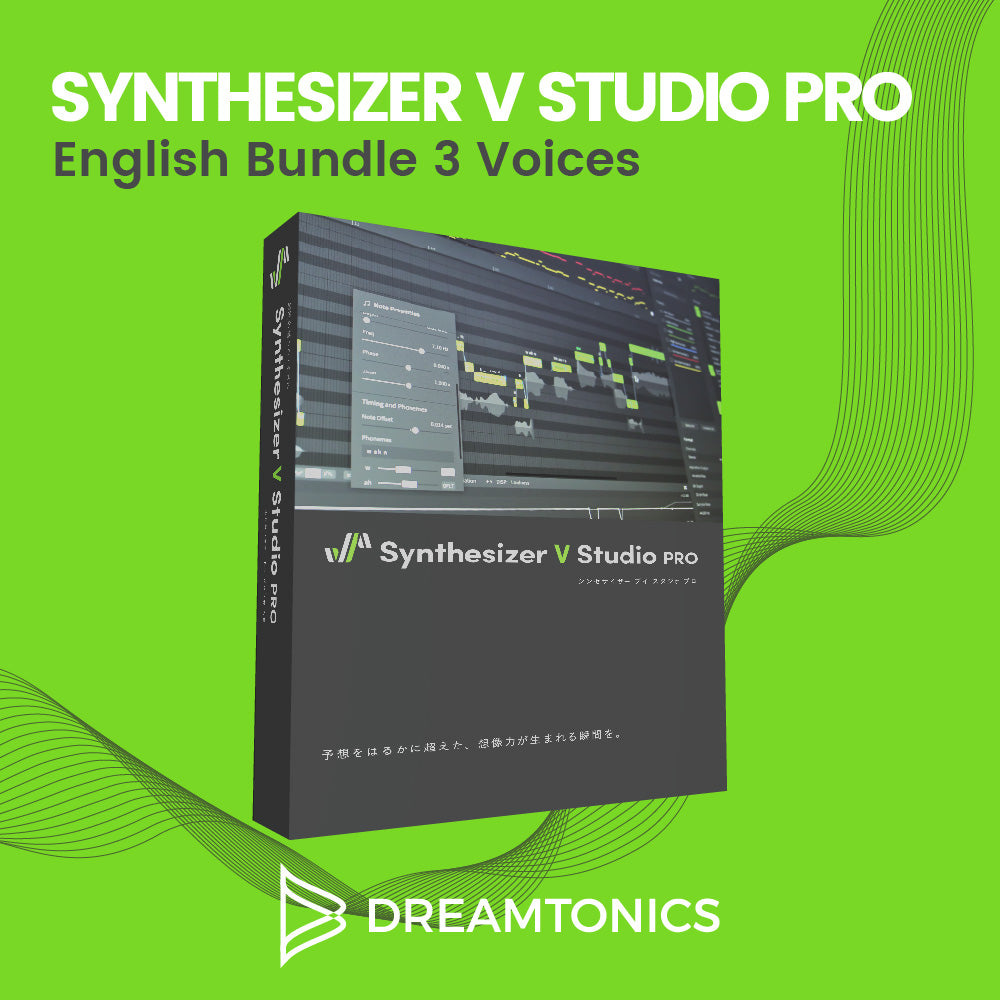 |
Dreamtonics Synthesizer V English Bundle 3 VoicesSuperb natural-sounding singing plugin with 3 voices. Synthesizer V Studio Pro, AI Kevin, AI Natalie, AI Ritchy |
When it comes to creating realistic vocal performances using AI vocal synthesis, timing is everything. If your vocal doesn’t lock perfectly with your instrumental, it can break the immersion, no matter how good the tone or articulation is. In this tutorial, we learn how to seamlessly sync AI-generated vocals with an instrumental track using Synthesizer V Studio, guided by Josh’s clear, step-by-step workflow.
Whether you're producing a full song or experimenting with vocal melodies, this method will help you achieve a clean and professional mix—even without a human singer.
Step 1: Import the Instrumental
Start by dragging your instrumental track directly into Synthesizer V Studio. It will be loaded into a dedicated audio track lane, where you can visualize and align the waveform with your AI vocal arrangement.
Josh recommends importing the final instrumental mix, not individual stems, to simplify synchronization and focus on vocal timing and blend.
Step 2: Set the Tempo (Manually or Automatically)
If your instrumental was created in a DAW with a known BPM, you can set the tempo manually. Otherwise, Synthesizer V Studio offers options to analyze and match the tempo based on the waveform of the instrumental.
Getting this right is essential—without the correct tempo, your vocal phrasing and timing will fall out of sync. Once locked in, the piano roll will align perfectly with your instrumental, giving you full control over note timing and expression.
Step 3: Balance Levels Between Vocal and Instrumental
A common mistake in AI vocal production is neglecting mix balance. Josh suggests lowering the instrumental volume slightly during arrangement and vocal editing stages, so you can focus on tuning articulation, pitch, and timing without being overwhelmed by the backing track.
Use the mixer in Synthesizer V to adjust both volume and panning, and make sure your vocal sits clearly above the instrumental.
Step 4: Edit Vocal Timing and Dynamics
Now that everything’s aligned, it’s time to fine-tune the vocal performance:
-
Adjust note lengths to match instrumental phrasing
-
Use the expression and vibrato curves to humanize delivery
-
Pay close attention to consonants and plosive placement to avoid clashing with percussive elements
This phase is where Synthesizer V really shines—giving you the tools to shape vocals with natural expression and precise control.
Step 5: Polish Your Mix with Effects
While Synthesizer V isn’t a full DAW, you can still apply basic mixing tools like EQ and reverb to smooth out the vocal. For more advanced mixing, Josh exports the synced vocal and imports it into a DAW for final polish using plugins.
This hybrid workflow lets you combine the power of AI-generated vocals with the familiarity and flexibility of your main production environment.




















